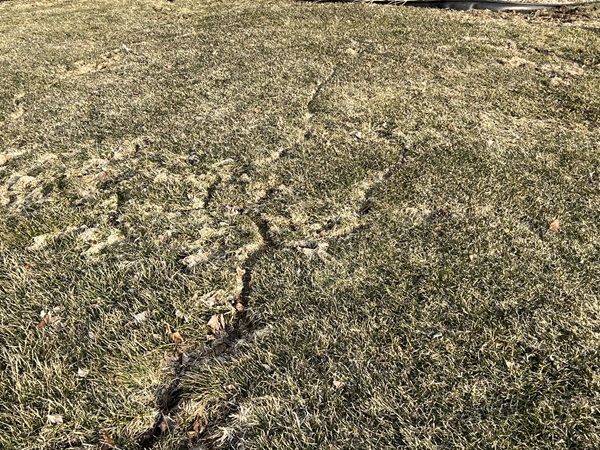Matted down, grassy trails in the lawn and missing bark on trees and shrubs in late winter and early spring might be when you first become aware of voles in your landscape. Fall is an important time to protect plants from damage.

Voles are herbivores actively feeding on plants, seeds, bulbs, and the trunks and roots of various trees and ornamental plants year-round. Soon after planting you may discover voles have devoured young plants and dug up newly planted seeds and bulbs.
Moles are often blamed for the damage caused by voles. Unlike voles, moles feed on earthworms and some soil-dwelling insects. They travel in interconnected tunnels 3 to 12” below ground whereas voles typically use above-ground surface runways.
Although short-lived, voles are very productive, and their populations tend to peak every three to five years. You’ll often see a rise in the number of voles and damage they cause when winters are mild and there is a consistent cover.
The damage to lawns is irritating but usually only cosmetic and can be repaired. Allow the surrounding grass to fill in narrow trails or overseed the trails and damaged areas in spring.
Reduce the risk of damage to your plants by pulling mulch away from the trunk of trees and stems of shrubs. Enclose susceptible plants, typically new plantings and young trees, with a cylinder of hardware cloth. Sink the wire several inches into the ground to keep the voles out.
Keep the grass surrounding flower beds mowed to reduce the risk of voles moving into the garden. Cut tall grasses shorter in the fall so they do not fall over and create homes for these pests. The same is true for branches lying on the ground. Trimming these off the soil surface also helps eliminate vole habitats.
Some gardeners choose to use a snap trap to manage these rodents. When populations are high there can be hundreds of them, limiting the success of this option. If you opt to use a rat trap baited with peanut butter and oats and placed on one of their trails, set it inside a pipe. The pipe or a similar cover prevents birds from feeding on the oats and being killed by the trap.
A variety of animals including hawks, owls, and foxes feast on voles, helping to manage their populations. Avoid using rodent poison that puts them as well as cats and dogs at risk when feeding on a poisoned vole.
Melinda Myers has written more than 20 gardening books, including Small Space Gardening. She hosts the “How to Grow Anything” DVD series and the Melinda’s Garden Moment TV & radio segments. Her website is MelindaMyers.com.




Comment here